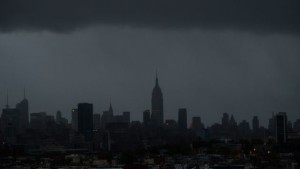
News reports tell us that negotiations have been delayed between the U.S. and Iran on nuclear weapons. But the reports divert our attention on Al Qaeda/ISIS while supporting the Shia’s diversion of US supplies and support away from the Sunnis trying to fight Al Qaeda/ISIS.
The reported deaths of an Iranian Revolutionary Guard (IRG) general about 70 miles north of Baghdad and an IRG colonel in Syria suggest a much larger IRG ground role in fighting ISIS forces than the US has been to able to marshal among its allies.
The rise of ISIS, the weakened US fighting position, and the humiliating performance of US-trained Iraqi soldiers reflect a continuation of trends that began to emerge in Iraq immediately after the US invasion in 2003. Those trends are best explained in context of Iran’s likely strategy for becoming a superpower and advancing its Shia brand of Islamic extremism throughout the Middle East.
The strategy is based on three objectives:
- Cause the US to waste its resources and prestige by implementing flawed policies,
- Convert Iraq into an Iran-like sister Shia state, (the combined oil reserves of the two countries exceeds Saudi Arabia’s reserve), and
- Delay final negotiations with the US on nuclear arms until the relevancy and negotiating strength of the US has been sufficiently reduced.
Iran has relied on international diplomacy to delay final arms negotiation while focusing most of its attention on the first two objectives. It began shortly after the 2003 invasion by using the US-ordered removal of Sunnis from all Iraq government positions to establish the basics of an anti-Sunni government that still stands.
Iran worked with Shia extremists to place trained members of the Badr Brigade, an Iranian based and trained group of Iraqi exiles, and other trained Shia extremists in key positions in Iraq’s military and Ministry of Interior (MOI) in 2003.
Less than one year later, the MOI was discovered secretly torturing Sunnis. It is not known exactly when the MOI began and stopped (if it ever stopped) torturing Sunnis but it is known that the MOI is currently headed by a Badr official.
The net effect of the US policies has been to replace Saddam Hussein’s murderous anti-Shia government with the Shia’s equally murderous anti-Sunni government – at the cost of hundreds of billions of US dollars. The policies clearly benefitted Iran far more than the Iraqi people or the US.
The Iraqi government has used Shia militias and death squads sponsored by Iran since their creation in early 2003. The militias and death squads aided in the government’s early attempts to drive Sunnis from Iraq. They were later used in 2006 in an attempt to start a civil war between the Shia and the Sunni and to obstruct 2007/2008 Shia-Sunni reconciliation efforts.
Although the reconciliation efforts were highly successful, the US failed to object when the Iraq government reneged on its commitment to continue its support of the efforts. Iraq then unleashed the militias against the Sunnis, and began replacing trained military officers with political hacks to appease Shia extremists. But the reconciliation was so stabilizing that it constituted a threat to all groups with interests in keeping control by continuing the conflict, including al-Malaki with his manipulations related to the election process. Reconciliation withered away and all the people who had supported the reconciliation became subject to retaliation.
Now those good people, who worked for reconciliation, if they are still alive, are under the cross-hairs of ISIS, the organization that evolved from AQI during post-reconciliation conflicts as the Sunni extrimists and Shi’a ones.
The author, J. Duncan Southall, served two tours in Iraq. During his last tour (2007), he worked as the governance officer in support of the counter-insurgency operations conducted by the 10th Mountain Division’s 2nd Brigade Combat Team (BCT) in the Sunni Triangle of Death. He worked with community leaders, including the leaders of Mahmudiya (a city of approximately 500,000 people) and sheikhs and tribal leaders of 32 tribes located in the area. Southall is near completion of his memoir of service in the Sinai, Iraq, Afghanistan, and the Rita and Katrina hurricanes. He served in the Marines for 10 years before 9/11.



